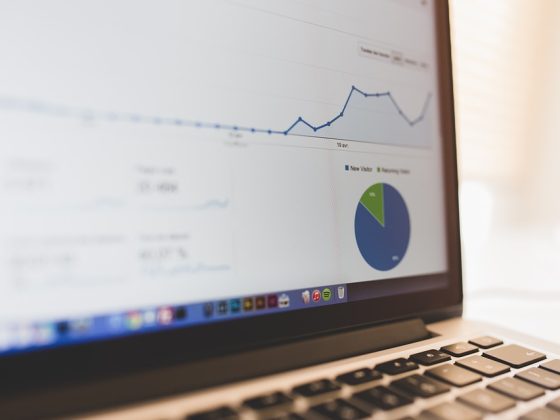end of the article.
In today's fast-paced business world, staying ahead of the competition is crucial. One way to gain a competitive edge is by utilizing business analytics to make informed decisions and drive growth. However, many business owners and managers are still unsure about what exactly business analytics is and how it can benefit their organization. In this article, we will demystify business analytics and provide you with the information you need to stay ahead of the curve.
What is Business Analytics?
Business analytics is the practice of using data and statistical methods to analyze and interpret past business performance in order to gain insights and make informed decisions. It involves collecting data from various sources, such as sales, marketing, customer feedback, and financial reports, and using analytical tools to uncover patterns, trends, and correlations that can help organizations improve their operations and achieve their goals.
Business analytics is a broad field that encompasses a wide range of techniques and methodologies, including descriptive analytics, which focuses on summarizing data to provide insights into past performance; predictive analytics, which uses statistical models to forecast future trends and outcomes; and prescriptive analytics, which recommends actions to optimize business processes and achieve desired outcomes.
Why is Business Analytics Important?
In today's data-driven world, businesses generate vast amounts of data on a daily basis. Without the ability to effectively analyze and interpret this data, organizations risk missing out on valuable insights that can help them make strategic decisions and stay competitive. Business analytics allows companies to gain a deeper understanding of their operations, customers, and market trends, enabling them to identify opportunities for growth, improve efficiency, and mitigate risks.
By harnessing the power of business analytics, organizations can:
– Optimize operations: By analyzing data on key performance indicators, such as sales, inventory levels, and production costs, businesses can identify inefficiencies, bottlenecks, and areas for improvement in their operations.
– Improve customer satisfaction: By analyzing customer feedback, preferences, and purchasing behavior, businesses can tailor their products and services to better meet the needs and preferences of their target market, leading to increased customer satisfaction and loyalty.
– Make informed decisions: By using predictive analytics to forecast future trends and outcomes, businesses can make informed decisions about pricing, marketing strategies, and resource allocation, giving them a competitive advantage in the marketplace.
– Mitigate risks: By using prescriptive analytics to identify potential risks and recommend mitigation strategies, businesses can proactively address threats to their operations, such as supply chain disruptions, regulatory changes, and economic downturns.
How to Get Started with Business Analytics?
If you're new to business analytics, getting started can seem daunting. Here are some steps you can take to begin harnessing the power of data and analytics in your organization:
1. Define your goals: Identify your business objectives and the key performance indicators that will help you measure your progress towards achieving them. This will help you focus your analytics efforts on areas that will have the greatest impact on your bottom line.
2. Collect and clean data: Gather data from internal and external sources, such as sales, marketing, and customer feedback, and clean the data to remove duplicates, errors, and inconsistencies. This will ensure that your analysis is based on accurate and reliable information.
3. Choose the right tools: There are many analytics tools and platforms available on the market, ranging from simple spreadsheets to advanced data visualization software. Choose a tool that aligns with your budget, technical capabilities, and analytical requirements.
4. Analyze the data: Use analytical techniques, such as regression analysis, clustering, and machine learning, to uncover patterns, trends, and correlations in your data. This will help you gain insights into your business performance and identify opportunities for improvement.
5. Take action: Use the insights generated from your analysis to make informed decisions and drive growth in your organization. Monitor your progress towards your goals and adjust your strategies as needed to stay ahead of the competition.
FAQs
Q: What's the difference between business analytics and business intelligence?
A: Business analytics focuses on using data and statistical methods to analyze past performance and predict future trends, while business intelligence focuses on collecting, organizing, and reporting data to support decision-making. Business analytics is more forward-looking and strategic, while business intelligence is more retrospective and operational.
Q: Do I need a data scientist to implement business analytics in my organization?
A: While having a data scientist on staff can be helpful for implementing advanced analytics techniques, such as machine learning and predictive modeling, you don't necessarily need one to get started with business analytics. Many analytics tools are designed for non-technical users and offer built-in capabilities for data analysis and visualization.
Q: How can I measure the ROI of my business analytics initiatives?
A: To measure the ROI of your business analytics initiatives, track key performance indicators, such as revenue growth, cost savings, and customer satisfaction, before and after implementing analytics. Calculate the impact of analytics on these metrics and compare it to the costs of your analytics program to determine the return on investment.
In conclusion, business analytics is a powerful tool that can help organizations make informed decisions, optimize operations, and drive growth. By getting started with analytics and harnessing the insights generated from data analysis, businesses can stay ahead of the competition and succeed in today's data-driven marketplace.











